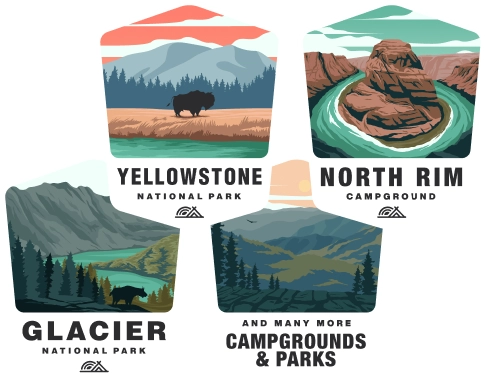Camping at Chattahoochee-Oconee National Forest
Overview of Chattahoochee-Oconee National Forest
The Chattahoochee-Oconee National Forest covers nearly 867,000 acres across northern Georgia, offering an abundance of recreational activities such as hiking, biking, camping, fishing, and more. The forest is divided into two separate forest units: the Chattahoochee and the Oconee, which are known for their scenic landscapes ranging from rolling hills to impressive mountains.
Camping Options
Developed Campgrounds: There are various developed campgrounds within the forest that provide amenities such as picnic tables, grills, restrooms, and potable water. Campsites can typically be reserved in advance through the recreation.gov website.
Dispersed Camping: For those seeking a more remote experience, the forest also offers dispersed camping, which allows you to camp outside of the designated campgrounds. This usually means no services like water, trash removal, or toilets are available.
Backcountry Camping: Backcountry camping is allowed in the wilderness areas of the forest, such as the Cohutta Wilderness. Visitors must follow Leave No Trace principles and may have to check for specific wilderness area regulations regarding campfires and campsite selection.
Rules and Regulations
-
Campfires: Check current conditions for fire regulations as they can change seasonally and with weather conditions. Never leave a fire unattended and ensure it's completely extinguished before leaving.
-
Leave No Trace: Follow these principles to minimize your impact on the environment.
-
Permits: Some activities within the forest may require a permit, such as large group gatherings or commercial uses. Furthermore, certain wilderness areas may require a free, self-issued permit for backcountry camping.
-
Wildlife: The forest is home to bears and other wildlife. Proper food storage and wildlife safety practices must be followed.
-
Trail Use: Stay on designated trails to avoid damaging the environment and heed all posted trail markers and signages.
Amenities and Activities
-
Recreational Activities: Visitors can enjoy a wide range of activities, including fishing in streams and lakes, and hiking on numerous trails including a portion of the Appalachian Trail. Mountain biking and horseback riding are also popular activities.
-
Visitor Centers: Visitor centers can provide maps, sell passes, and offer detailed information about the forest’s trails, campgrounds, and regulations.
Safety and Preparedness
-
Weather: Be prepared for changeable weather, especially at higher elevations where it can be colder and more unpredictable.
-
Water: Always have a plan for water, either by bringing enough for your trip or having the ability to treat natural water sources.
-
Emergency Preparedness: Have a plan for emergencies, including a first-aid kit and the ability to call for help if needed.
Passes and Fees
- There are fees associated with many developed campgrounds and day-use areas. Annual passes can be purchased which provide access to all federal recreation sites.
Conservation Efforts
The forest is managed by the United States Forest Service and there are ongoing efforts for land and ecosystem conservation. Visitors are expected to play a role in preserving the natural beauty of the forest by adhering to established rules and guidelines.
Useful Contacts
For the most current information, such as road closures, trail conditions, and fire restrictions, it's advisable to contact the Forest Service directly or visit their website before you go. Local ranger stations can also provide detailed information tailored to your camping trip within the Chattahoochee-Oconee National Forest.
